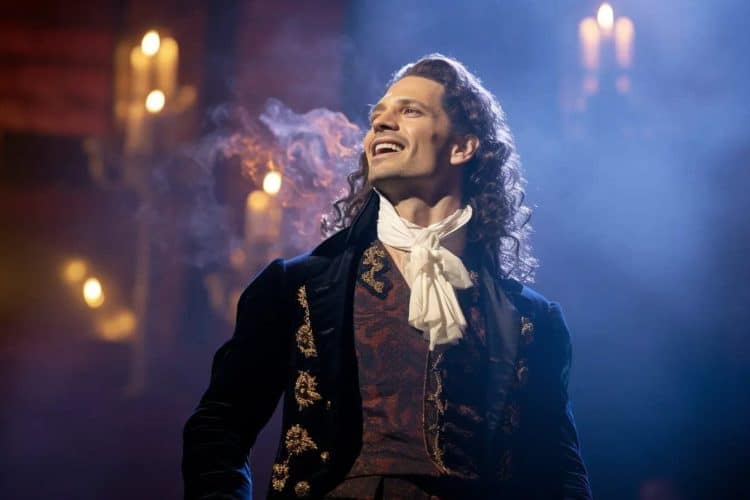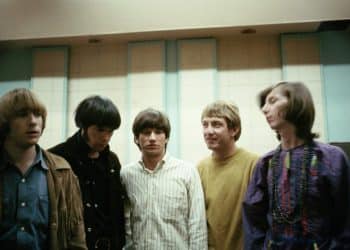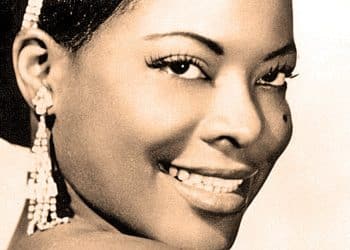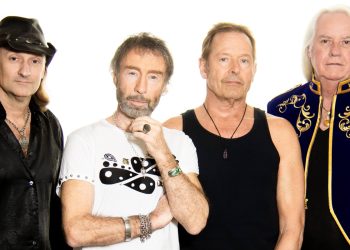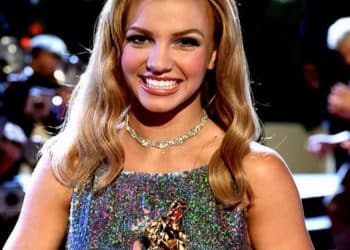Opera is a world where music and drama collide in the most spectacular way, creating timeless masterpieces that stir the soul, ignite passion, and leave audiences breathless. From the heart-wrenching arias of Puccini to the electrifying brilliance of Verdi and the enchanting melodies of Mozart, opera has given us some of the most unforgettable pieces in classical music history. Whether you’re a seasoned opera aficionado or just discovering its magic, these songs transcend time and culture, captivating listeners with their sheer beauty and emotional depth.
In this list, we explore the 15 most popular opera songs of all time—pieces that have defined the genre and become cultural icons in their own right. These arias and duets have graced the world’s grandest opera houses, been immortalized in film and television, and even found their way into pop culture. From the triumphant cry of Nessun Dorma to the seductive allure of Habanera, each of these songs tells a story of love, betrayal, hope, or despair, performed by the greatest voices in history.
So, prepare to be swept away by music that has enchanted audiences for centuries—these are the opera songs that will make your heart soar! 🎶✨
1. “Nessun Dorma” – Turandot (1926, Giacomo Puccini)
Few arias in opera history have achieved the legendary status of Nessun Dorma, the breathtakingly powerful tenor aria from Puccini’s final opera, Turandot. Premiering posthumously in 1926, this aria is sung by the determined Prince Calaf as he awaits the dawn, believing he has won the heart of the cold and enigmatic Princess Turandot. Beginning with a tender, haunting melody, Nessun Dorma swells into an electrifying climax, culminating in the iconic, spine-tingling cry of “Vincerò!” (I will win!). While already beloved in opera circles, this aria became a global phenomenon after Luciano Pavarotti’s unforgettable performance at the 1990 FIFA World Cup, introducing millions to its grandeur. Its soaring melody and triumphant spirit have since made it a universal anthem of perseverance, passion, and triumph. Whether performed in grand opera houses or on the world’s biggest stages, Nessun Dorma never fails to stir the soul.
2. “O mio babbino caro” – Gianni Schicchi (1918, Giacomo Puccini)
Few melodies in opera capture pure emotion as beautifully as O mio babbino caro, the exquisite soprano aria from Puccini’s one-act comic opera, Gianni Schicchi. Sung by the lovesick young Lauretta as she begs her father to allow her to marry her beloved Rinuccio, the aria’s gentle, floating melody is infused with both innocence and heartfelt desperation. Premiering in 1918, this moment of sincerity and warmth contrasts with the opera’s otherwise comedic tone, making it one of Puccini’s most beloved compositions. Over the decades, O mio babbino caro has transcended opera, appearing in films, television, and commercials, further cementing its place in popular culture. Its poignant simplicity and ethereal beauty continue to captivate audiences, making it a favorite for both seasoned opera lovers and newcomers alike.
3. “Habanera” – Carmen (1875, Georges Bizet)
Sultry, seductive, and utterly unforgettable, Habanera is the defining aria of Bizet’s Carmen and one of the most recognizable pieces in all of opera. Premiering in 1875, this fiery mezzo-soprano aria—formally titled L’amour est un oiseau rebelle (Love is a rebellious bird)—is sung by the free-spirited Carmen as she warns that love is as wild and unpredictable as the wind. The aria’s hypnotic, dance-like rhythm, inspired by the Cuban habanera style, perfectly mirrors Carmen’s flirtatious and independent nature. With its teasing vocal lines and irresistible energy, Habanera has captivated audiences for nearly 150 years, appearing in countless films, commercials, and cultural references. It remains a masterclass in musical seduction, a timeless expression of passion and freedom.
4. “La donna è mobile” – Rigoletto (1851, Giuseppe Verdi)
If there’s one opera tune that nearly everyone recognizes, it’s La donna è mobile, the playful yet biting aria from Verdi’s Rigoletto. Premiered in 1851, this irresistibly catchy melody is sung by the womanizing Duke of Mantua, who mockingly proclaims that women are fickle and inconstant—ironically revealing his own shallow nature. The aria’s light, buoyant energy makes it both amusing and deceptively charming, an ideal reflection of the Duke’s carefree attitude. Verdi, knowing he had a hit on his hands, kept the melody a secret until the opera’s debut to prevent early leaks. Today, La donna è mobile remains one of opera’s most frequently performed and widely recognized pieces, a favorite for tenors and a crowd-pleaser that never fails to entertain.
5. “Brindisi” (Libiamo ne’ lieti calici) – La Traviata (1853, Giuseppe Verdi)
A true celebration of life and love, Brindisi—also known as the Drinking Song—is one of the most jubilant and infectious arias in all of opera. Premiering in 1853 as part of Verdi’s La Traviata, this lively duet is performed by Alfredo and Violetta as they lead a toast at a lavish party, encouraging everyone to embrace the fleeting pleasures of life. With its joyful call-and-response structure and effervescent melody, Brindisi is a staple at opera concerts and gala events worldwide. While it exudes pure joy, the aria also foreshadows the tragic love story at the heart of La Traviata, making it a poignant and unforgettable moment in Verdi’s masterpiece.
6. “Largo al factotum” – The Barber of Seville (1816, Gioachino Rossini)
An exhilarating showcase of vocal agility and comedic brilliance, Largo al factotum from Rossini’s The Barber of Seville is one of opera’s most dynamic and entertaining arias. Premiering in 1816, this baritone tour de force introduces Figaro, the quick-witted and endlessly resourceful barber who prides himself on being the town’s go-to man for everything. With rapid-fire patter singing and a playful, larger-than-life energy, this aria demands extraordinary vocal dexterity and charisma. Its iconic refrain—”Figaro, Figaro, Figaro!”—has become a hallmark of opera in popular culture, appearing in cartoons, commercials, and movies. Largo al factotum remains an electrifying crowd favorite and a true test of an opera singer’s skill.
7. “E lucevan le stelle” – Tosca (1900, Giacomo Puccini)
Few arias capture raw, heartbreaking emotion like E lucevan le stelle, the deeply moving tenor aria from Puccini’s Tosca. Premiering in 1900, this aria is sung by the doomed painter Cavaradossi as he reflects on his love for Tosca in the moments before his execution. The melody, infused with longing and despair, builds to a tragic climax, leaving audiences breathless. E lucevan le stelle perfectly embodies Puccini’s gift for combining soaring lyricism with emotional depth, making it one of opera’s most beloved arias. Whether performed onstage or in concert, its bittersweet beauty continues to resonate with listeners, evoking the universal themes of love, loss, and fate.
8. “Der Hölle Rache” (Queen of the Night Aria) – The Magic Flute (1791, Mozart)
A dazzling display of vocal fireworks, Der Hölle Rache—better known as the Queen of the Night Aria—is one of the most challenging and thrilling pieces in all of opera. Premiering in 1791 as part of Mozart’s The Magic Flute, this coloratura soprano aria is sung by the vengeful Queen of the Night, who demands her daughter commit murder to prove her loyalty. Featuring lightning-fast runs, dramatic leaps, and astonishingly high notes reaching F6, this aria is a true test of vocal precision and agility. Its intensity and technical difficulty make it a showstopper that never fails to leave audiences in awe. Der Hölle Rache remains a pinnacle of soprano virtuosity, an aria that is as mesmerizing as it is fearsome.
9. “Un bel dì vedremo” – Madama Butterfly (1904, Giacomo Puccini)
One of the most heartbreaking arias in opera, Un bel dì vedremo from Madama Butterfly (1904) expresses pure longing and fragile hope. In this poignant moment, Cio-Cio-San, known as Butterfly, clings to the dream that her American husband, Pinkerton, will return to her. The soaring melody mirrors her unwavering optimism, even as the audience knows her fate is sealed in sorrow. Puccini’s lush orchestration and Butterfly’s delicate yet powerful vocal line create an emotionally devastating experience, making this aria one of the most beloved in the operatic repertoire.
10. “Casta diva” – Norma (1831, Vincenzo Bellini)
A masterpiece of the bel canto tradition, Casta diva from Norma (1831) is a prayer for peace, sung by the Druid priestess Norma as she stands beneath the moon. The aria’s ethereal beauty, with its long, flowing phrases, demands not only technical skill but also deep emotional expression. Bellini’s writing allows the soprano to showcase both power and tenderness, making Casta diva a defining piece in the operatic world. Legendary sopranos, from Maria Callas to Montserrat Caballé, have cemented its status as an iconic aria.
11. “Au fond du temple saint” – Les pêcheurs de perles (1863, Georges Bizet)
This stunning duet from Bizet’s Les pêcheurs de perles (1863) is a mesmerizing interplay of voices, blending nostalgia, brotherhood, and lost love. Two former friends, Nadir and Zurga, reminisce about the mysterious woman they both once loved, their voices intertwining in harmony as they relive the beauty of their shared vision. The sweeping orchestration and soaring melody make Au fond du temple saint one of opera’s most enchanting male duets, filled with a dreamlike sense of longing.
12. “Che gelida manina” – La Bohème (1896, Giacomo Puccini)
A defining moment of romance in Puccini’s La Bohème (1896), Che gelida manina captures the magic of love at first sight. Rodolfo, a struggling poet, tenderly takes Mimì’s cold hand and tells her about his humble life and grand dreams. As his passion builds, the music swells into an unforgettable climax, reflecting the warmth and excitement of newfound love. This aria is a showcase of lyric tenors, requiring both delicate phrasing and soaring high notes.
13. “Vesti la giubba” – Pagliacci (1892, Ruggero Leoncavallo)
Few arias in opera carry as much raw emotion as Vesti la giubba from Pagliacci (1892). Sung by Canio, a clown who must go on stage despite his unbearable heartbreak, it embodies the pain of masking sorrow behind laughter. The famous cry, “Ridi, Pagliaccio” (Laugh, Clown), is an unforgettable moment of anguish, as he forces himself to perform even as his world falls apart. Leoncavallo’s music, filled with dramatic intensity, makes this one of the most gut-wrenching and recognizable tenor arias in opera.
14. “Dido’s Lament” – Dido and Aeneas (1689, Henry Purcell)
A baroque masterpiece of sorrow and resignation, Dido’s Lament from Dido and Aeneas (1689) is a haunting farewell to life. Queen Dido, abandoned by her lover Aeneas, prepares for death, her grief expressed through Purcell’s achingly beautiful descending bass line. The aria’s repeated phrase, “Remember me, but ah! forget my fate,” lingers in the mind, capturing the essence of tragedy. This piece remains one of the most powerful laments in all of classical music, its heartbreaking simplicity transcending time.
15. “Caro nome” – Rigoletto (1851, Giuseppe Verdi)
A dazzling showcase for coloratura sopranos, Caro nome from Rigoletto (1851) radiates youthful innocence and romantic devotion. Gilda, smitten with the mysterious man she believes to be a poor student (but who is actually the Duke of Mantua), sings of her love, her voice dancing over intricate, ornamented phrases. The aria’s delicate and floating high notes make it a favorite for sopranos looking to display both technical brilliance and heartfelt emotion. Verdi’s exquisite writing makes Caro nome an irresistible expression of first love.
